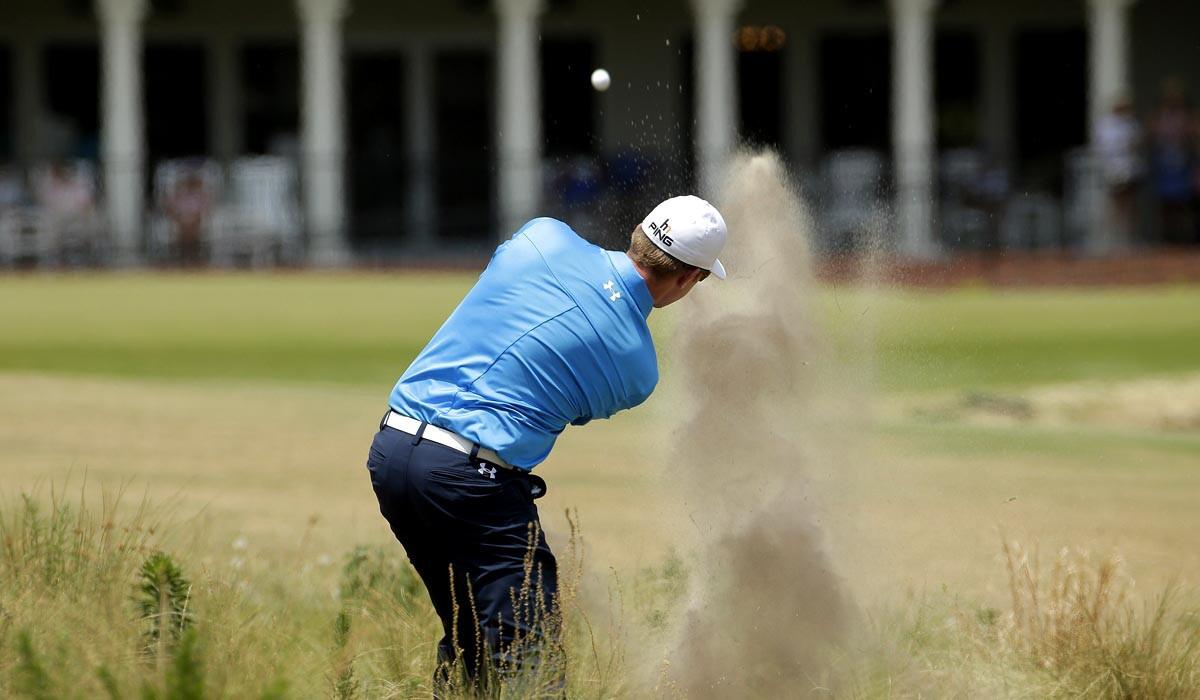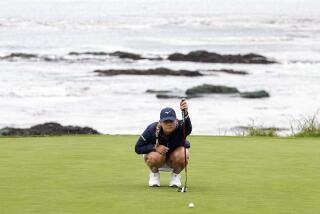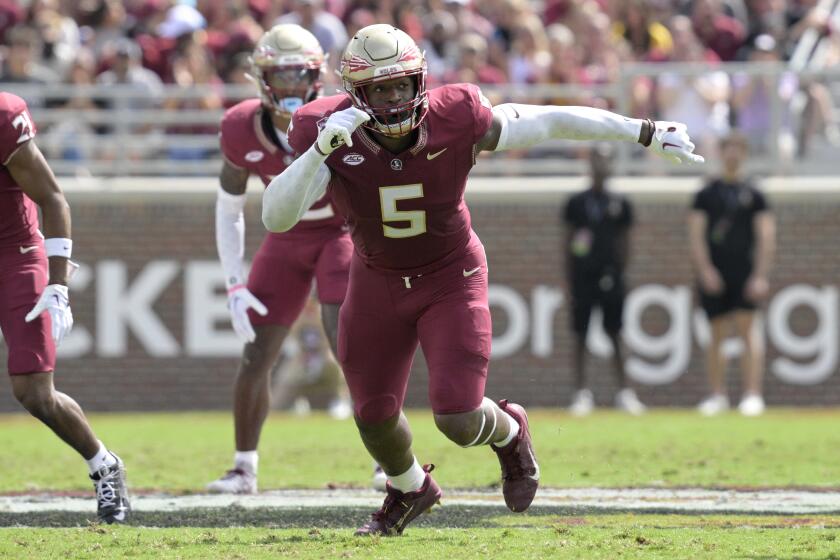Column: U.S. Open course’s new look is ragged, and golfers may feel that way

The United States Golf Assn. has taken its annual exercise in sadism to new heights. This year, it will torture both genders of tour players at the same place.
It all begins Thursday, with the first round of the 72-hole U.S. Open for men. Next week, it will be the women’s turn. Same course, same setup, same needles being stuck in fingernails.
The scene of the double crime is the legendary Pinehurst No. 2 course. They played the men’s U.S. Open here in 1999 and 2005. This will be a first for the women, although they have played at a nearby course called Pine Needles three times.
The frightening facts are as follows:
• When Payne Stewart won in ‘99, his score was one under par, the best score ever in a U.S. Open here. The legendary moment afterward, when he grabbed runner-up Phil Mickelson’s head and allegedly told him his soon-to-be-born child was more important than a golf tournament, may have been misreported. He may have been screaming in Mickelson’s face: “Can you believe I just broke par on this #**@#%* golf course?”
• When New Zealander Michael Campbell won in 2005, he shot even par. He is not here this week, not playing much at all on the tour. He lives in Spain and this was his last year of exemption into the Open. He said no thanks. Perhaps he has Pinehurst nightmares.
• The men will play at 7,562 yards, more than 300 yards longer than each of the last two U.S. Opens. The only longer one was the 2008 Tiger-limps-to-the-title at the Torrey Pines U.S. Open, which played at 7,643. At least there, you had ocean views and high cliffs from which to jump.
• The men will face four par 4s of more than 500 yards and one par 3 of 260 yards. Length off the tee will be crucial. So will a tournament therapist.
• Pinehurst No. 2 features crowned greens, or “turtle backs,” as the USGA calls them. Think of a turtle, think of putting a ball on his back and making it stop there. You get the idea. In 1999, John Daly tried to roll a putt from a collection area around the eighth green up onto the green and to the pin. His first putt rolled back down to his feet. His second putt was about to do the same thing when Daly interrupted it mid-roll and slapped it back across the green. Hitting the ball while it is rolling was a two-stroke penalty. Daly took an 11 on the hole.
But that’s merely history. The USGA has added a new wrinkle. Junkyard golf. The shaggy-dog look.
They call it restoration. In the last few years, they have taken Pinehurst No. 2 and restored it to the way it was in the 1930s and ‘40s, the way they say original designer Donald Ross had it and wanted it.
If you remember your last televised glimpses of Pinehurst No. 2, it was this long and lush offering of tight fairways, heavy green rough and impossible-to-putt greens.
No more.
About three years ago, with a nod from Pinehurst and a nudge from the USGA, designers Ben Crenshaw and Bill Coore set out to turn the clock back 80 years. They found old documents and records of what Ross did, and they followed those guidelines.
Now, long and lush has become long and ragged. There is no rough. It has been replaced by sandy areas of weeds and pine needles and football-sized pine cones. There are more scraggly-looking green things than in a Scotts Weed & Feed commercial. Crenshaw and Coore reportedly introduced 40 different kinds of random plant life and 30 more grew in on their own.
Standing on the tees and looking down the fairways reminds you of the dreaded neighbor who never waters and never mows and considers dandelions decorative.
There is sand and junk everywhere and weeds growing out of the real traps and sand slipping out of those real traps so you can’t often tell where the actual trap begins. Expect lots of stoppage of play for consultation with walking officials. “Hey, Joe, is this a trap or a road?”
The golfers are keeping a stiff upper lip so far, and why not? They have yet to need to hit a shot that counts off a pine-cone-covered, bristle-bush sand hill.
The USGA’s executive director, Mike Davis, was asked about the sandy areas and the need to distinguish them from actual traps, where a club cannot be grounded.
“No raking, no anything,” he said.
Golf Channel’s Brandel Chamblee, a golf expert with a Yale vocabulary, walked around, took a look and called the course “random adversity.”
The joy of all this is that the USGA can actually, and accurately, call this economically justifiable torture. It cites the amount of water saved with this kind of course setup, and implies that this could be the wave of the future in golf course budget-cutting.
You can almost picture USGA big shots sitting around a table a couple of years ago, course maps of Pinehurst No. 2 on the table, chatting with delight while they sharpened knives and oiled thumb screws.
“Maybe some environment group will even give us an award,” one says.
Twitter: @DwyreLATimes
More to Read
Get our high school sports newsletter
Prep Rally is devoted to the SoCal high school sports experience, bringing you scores, stories and a behind-the-scenes look at what makes prep sports so popular.
You may occasionally receive promotional content from the Los Angeles Times.







